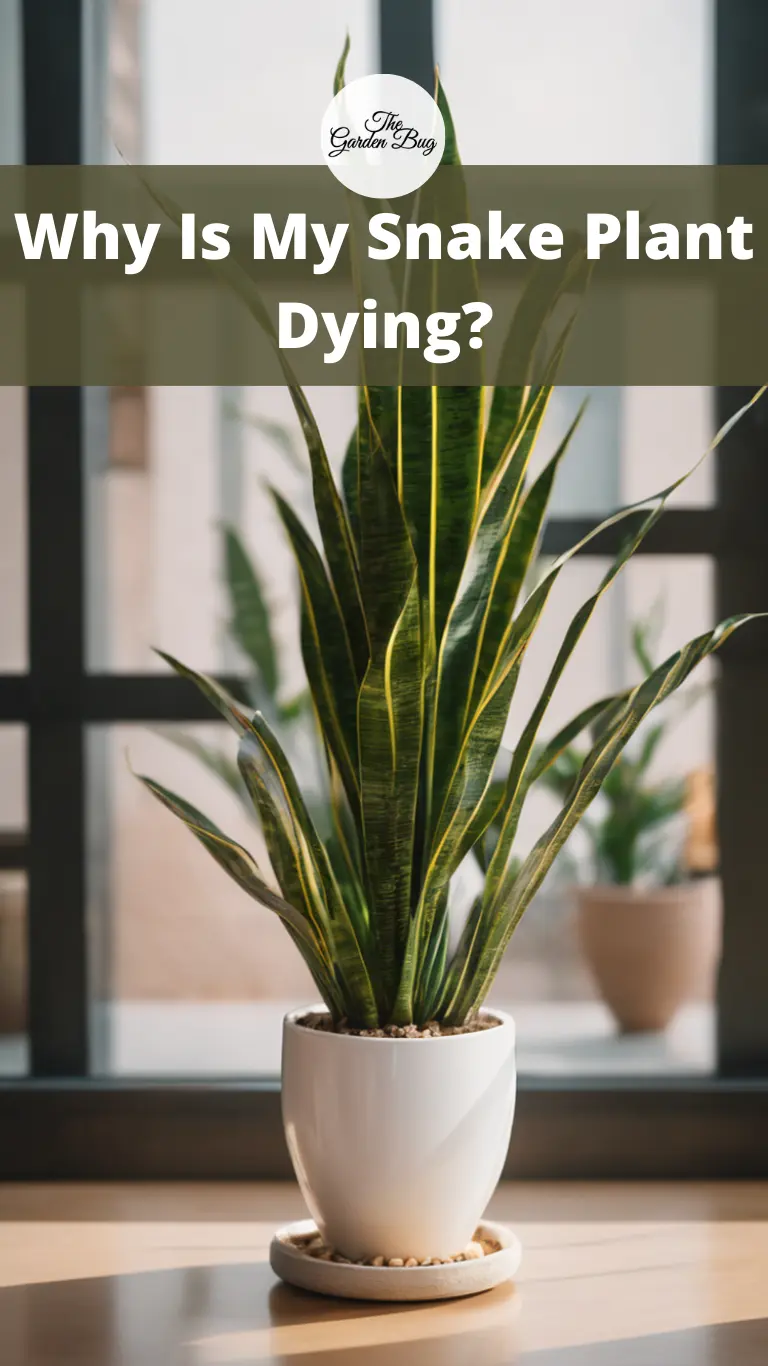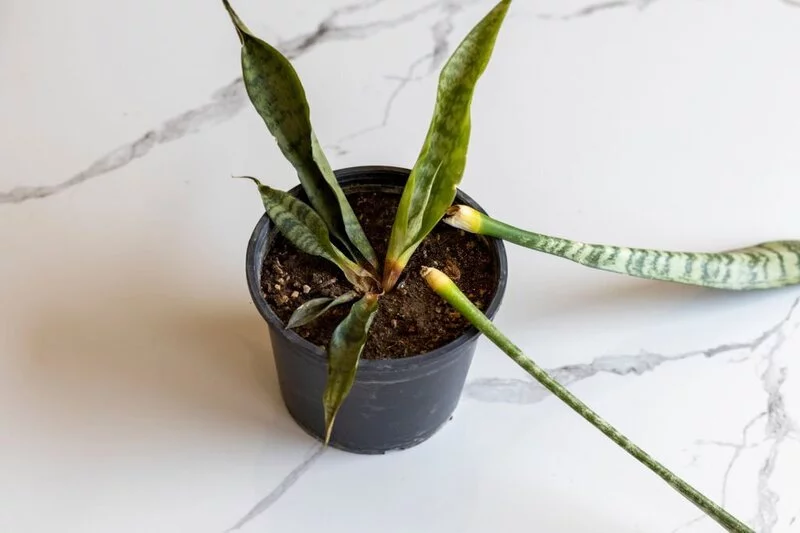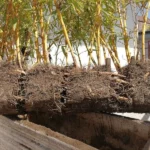Did you fall in love with the hardy, sleek snake plant, only to find it looking sickly and unhappy? Don’t worry, you’re not alone! Snake plants, or Sansevieria, are famous for being low maintenance and tough, making them a favorite amongst plant lovers, both seasoned and beginners. However, even the toughest plants can sometimes run into problems. Let’s discover what might be causing your snake plant to struggle and how to nurse it back to health.
- Sansevieria Plant Pot: Sansevieria Trifasciata Laurentii is a beautiful plant featuring a tight clump of vertically inclined dark green leaves with lighter gray-green, zig-zag, horizontal bands and broad, longitudinal, yellow stripes along the margins
- Indoor Plants: Sansevieria Laurentii, also known as Mother-in-Law’s Tongue or Snake Plants, bloom with clusters of greenish-white, fragrant flowers. However, they rarely bloom when grown indoors. The USDA hardiness zone for outdoor planting is 10–12
- Easy Maintenance: Sansevieria Laurentii plants are easy to care for; the plants grow well in bright, indirect sunlight, with the ideal temperature being 70–90° F. A heat pack is included with each plant if your region experiences cold weather
- Home and Garden Decor: Our Sansevieria Laurentii plant pot is perfect for windowsills, countertops, desks, and tables in your home or garden. The plant, which can reach heights of up to 3-4′, is also a great gift option for friends and family
- Health Benefits: Live plants purify the air in their surroundings and thus enable you to inhale clean, fresh air while also helping to boost mood levels. The plant is mildly harmful to humans and pets if ingested
Signs Your Snake Plant Is Unhealthy
Before we dive into the possible problems, it’s essential to understand how a distressed snake plant might look. Here are some signs to look out for:
- Yellowing Leaves: One of the first signs of an unhappy snake plant is yellowing leaves. If your snake plant’s normally vibrant green leaves are turning yellow, it’s a clear cry for help.
- Soft, Mushy Stems: Snake plants are firm to the touch. If your plant’s leaves are becoming soft or mushy, it’s not a good sign.
- Wilting or Drooping: While snake plants have a somewhat relaxed posture, excessive wilting or drooping is a red flag.
- Brown Tips or Spots: Brown, crispy leaf tips, or brown spots on the leaves can indicate a problem as well.
If your snake plant exhibits any of these symptoms, it’s time to play plant detective and identify the cause.
Common Problems Affecting Snake Plants
Now, let’s explore some common problems that might be causing your snake plant distress:
- Overwatering and Root Rot: Despite their robust nature, snake plants are quite sensitive to overwatering, which can lead to root rot, a common cause of plant death.
- Underwatering: While snake plants are drought-tolerant, they do need water to survive. Chronic underwatering can cause the plant to wilt and its leaves to wrinkle.
- Too Much Sun or Lack of Light: Snake plants thrive in indirect light. Too much direct sunlight can scorch the leaves, while too little light can cause the plant to become leggy and weak.
- Extreme Temperatures or Draft: Snake plants prefer stable, warm temperatures. Extreme temperature swings or drafts can stress the plant, leading to wilting or yellowing leaves.
- Wrong Soil Type: Snake plants need well-draining soil. If the soil retains too much water, it can lead to root rot and other issues.
If any of these problems sound familiar, don’t despair! In the following sections, we’ll provide solutions to these common snake plant problems and tips on how to revive your plant.
- SUPERIOR WATER MANAGEMENT- Quickly drain away excess moisture after each watering to protect roots and grow a happy plant
- PERFECT FOR ALL SNAKE PLANT TYPES- Specially blended substrate for all snake plants such as Sansevieria trifasciata, Laurentii, Black Coral, and Cylindrica
- ALL-NATURAL INGREDIENTS- Made from all-natural horticultural materials such as coconut coir, pine bark chips, perlite, and sand for added drainage; contains no slow release fertilizer
- PROFESSIONALLY MIXED IN THE USA- Each bag of snake plant soil is packaged with love on our family farm right in the USA; perfect for potted and outdoor snake plants
- REPOTTING MADE SIMPLE- Available in heavy-duty, resealable bags in 4 or 8 quart sizes; perfect for any size houseplant garden
Solutions to Common Snake Plant Problems
Now that we know the culprits, let’s discuss the solutions that can help your snake plant regain its strength:
- Watering: The golden rule for snake plants is to water sparingly. Allow the soil to dry out completely before watering again, and when you do, water thoroughly but ensure that the pot drains well.
- Light: Snake plants like bright, indirect light, but they’re also tolerant of lower light conditions. Place them near a window with filtered light for best results. Avoid direct, scorching sunlight to prevent leaf burn.
- Temperature: Maintain a consistent temperature in the room where you keep your snake plant. Avoid placing it near drafty windows or doors or heating/cooling vents.
- Soil: Use a well-draining potting mix, ideally one made for cacti or succulents. These mixes help prevent water-logging and promote healthy root growth.
Reviving a Dying Snake Plant
Is your snake plant already showing signs of distress? Don’t worry, there are steps to revive it:
- Check the Roots: If you suspect overwatering, check the roots. Healthy roots should be firm and white. If you find mushy, black, or rotten roots, you’ll need to take action.
- Prune and Repot: Remove the rotten roots and any unhealthy looking leaves, then repot the plant in fresh, well-draining soil.
- Water Wisely: After repotting, wait a few days before watering to allow the plant to settle in, then water sparingly.
Also, check our detailed article on how to revive snake plant.
Preventive Measures for Snake Plant Health
Remember, prevention is always better than cure. Here’s how you can keep your snake plant healthy:
- Routine Checks: Regularly inspect your snake plant for early signs of distress. Early detection can prevent minor issues from becoming major problems.
- Proper Watering: Get into the habit of checking the soil moisture before watering your plant. When in doubt, it’s better to underwater than overwater a snake plant.
- Right Environment: Ensure your snake plant is getting the right amount of light and is kept in a stable temperature environment.
With these solutions and preventive measures, your snake plant should be back to its sleek, vigorous self in no time!
Conclusion
Reviving an ailing snake plant may feel like a Herculean task, but with a bit of understanding and the right steps, you can bring it back to its vibrant, hearty self. Remember, every plant has its unique needs. By respecting your snake plant’s preferences and providing it with appropriate care, you can help it thrive and grow, adding a touch of green to your indoor space for years to come.
FAQs
- How often should I water my snake plant? It varies depending on your home’s humidity and light levels, but typically once every 2-3 weeks is sufficient. Always check the soil’s dryness before watering.
- Does my snake plant need a lot of sunlight? Snake plants are quite adaptable, but they prefer bright, indirect light. They can tolerate lower light levels but might grow slower.
- Why are the leaves of my snake plant drooping? Overwatering is a common reason. Alternatively, it could be due to exposure to extreme temperatures or drafts.






